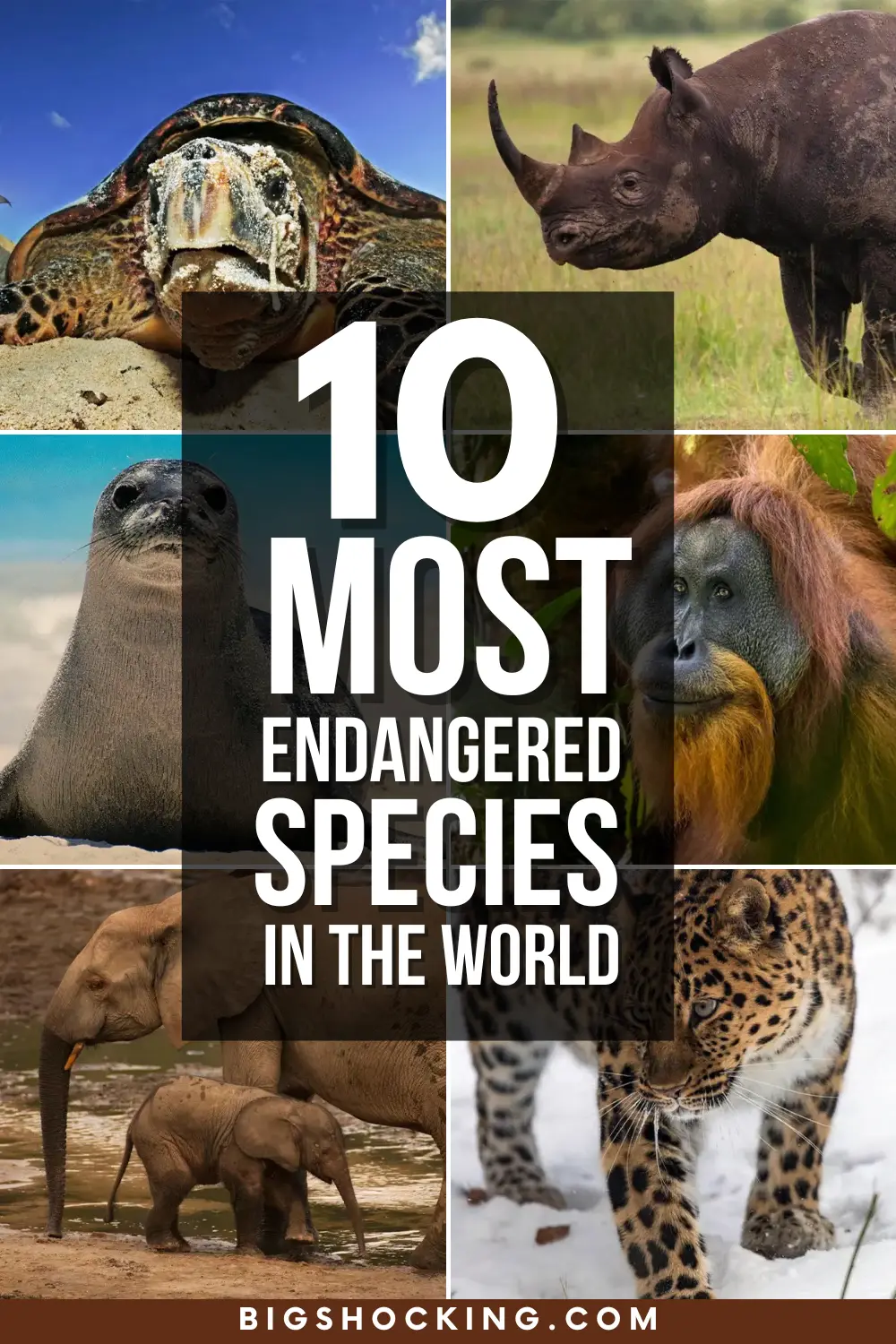10+ Most Endangered Species in the World
Searching for the most endangered species right now? These rare animals are disappearing fast and the reasons are alarming.
I once saw an Amur leopard listed with fewer than 100 left in the wild. This list highlights critically endangered animals you may not know about from the Javan rhino to the vaquita porpoise.
Loss of habitat, illegal trade, and climate shifts are pushing them toward extinction. This post goes beyond typical facts. It compares human extremes too like how odd ice cream flavors or extreme body modifications spark curiosity, yet these animals vanish quietly.
Use this guide to understand what’s at stake and how awareness can make a difference.
10 Most Endangered Species You Should Know About
Every name here is a species fighting to survive.
1. Tragic End of Caribbean Monk Seals
Caribbean monk seals once roamed the warm waters of the Gulf of Mexico and the Caribbean in peaceful groups of 20 to 40. These gentle creatures, often gray or brown and growing up to 8 feet long, showed little fear of humans.
Their calm nature made them easy targets. In the 1600s, plantation owners hunted them for oil to grease machinery, while fishermen used the oil for lamps. By the late 1800s, their population had crashed. By the end of the 1900s, they were listed among the world’s most endangered species.
2. Vanishing Giants of Java
Once spread across Southeast Asia, Javan rhinos now survive in just one spot Ujung Kulon National Park in Indonesia. Only about 75 remain, making them one of the rarest rhino species alive.
Their shrinking numbers stem from relentless hunting, habitat loss, and food competition with invasive Arenga palms. With such a small population, they’re at high risk from disease, natural disasters, and inbreeding.
3. Rare Beauty of the Russian Wild
With only about 100 left in the wild, the Amur leopard is one of the world’s most endangered big cats. These elusive cats live in a small stretch of eastern Russia and northeastern China.
Despite threats like shrinking prey, road networks, and habitat loss, their population is slowly growing. Most of their range is now protected, offering a chance at survival as they expand into new nearby habitats.
4. Hope Rises for Mountain Gorillas
Mountain gorillas live high in the misty forests of Uganda, Rwanda, and the DRC, split between two remote regions. Over 1,000 remain in the wild, yet they’re still endangered.
Surrounding poverty and political unrest push human settlements closer to their shrinking habitats. But thanks to strong conservation efforts, their numbers are slowly climbing though threats like habitat pressure and disease still loom.
5. Struggle to Save Sumatran Orangutans
Found only on Sumatra, these critically endangered orangutans number fewer than 14,000 in the wild. Their forests are vanishing due to logging, farming, and roads.
Many are also captured for the illegal pet trade, putting even more pressure on a species already pushed to the edge.
6. Shrinking Home of Sunda Tigers
The Sunda Island tiger, found only on Sumatra, is the smallest and rarest tiger subspecies, with around 600 left in the wild. Males weigh up to 140kg half the size of their Siberian cousins.
As Southeast Asia’s human population has surged, the tigers’ habitat has been steadily disappearing. They now face rising threats from poaching, illegal trade, and deadly conflicts with nearby communities.
7. World’s Rarest Great Ape
The Tapanuli orangutan, identified as a separate species in 2017, lives only in Sumatra’s Batang Toru forests. Fewer than 800 remain, making it the most endangered great ape alive.
Its fragile habitat is disappearing fast due to farming, mining, and energy projects. In just two decades, North Sumatra lost over 40% of its forests leaving these primates with nowhere else to go.
8. Last Freshwater Porpoise on Earth
The Yangtze finless porpoise is the only freshwater porpoise left in the world, now surviving solely in China’s Yangtze River. Fewer than 1,000 remain in the wild.
Pollution, overfishing, and habitat damage have put immense pressure on their survival. Once neighbors to the now-vanished Yangtze river dolphins, they face a future that could mirror that loss if protection efforts fail.
9. Black Rhinos Still Under Threat
Black rhinos faced near extinction from poaching between 1960 and 1995, with only 2% surviving the slaughter. Their numbers have since doubled, yet they remain critically most endangered species.
Roughly 5,630 now live in the wild, mostly in Kenya, Namibia, South Africa, and Zimbabwe. Poaching continues to be their greatest danger, driven by the illegal demand for rhino horn.
10. Crisis Facing Forest Elephants
Hidden in the forests of West and Central Africa, forest elephants have lost nearly 90% of their population in just three decades. Poaching and habitat destruction continue to drive their decline.
Now critically endangered, they roam only 25% of their original range, with most surviving in Gabon and the Republic of Congo. Their shy nature makes protection even harder.
11. Ocean Wanderers in Decline
Hawksbill turtles roam tropical and subtropical seas but face serious threats across all oceans. Only about 20,000 to 23,000 nesting females remain.
Over the past 30 years, their numbers have dropped by more than 80% due to bycatch, habitat loss, illegal shell trade, and coral reef damage. Climate change and plastic pollution continue to put them at risk.












